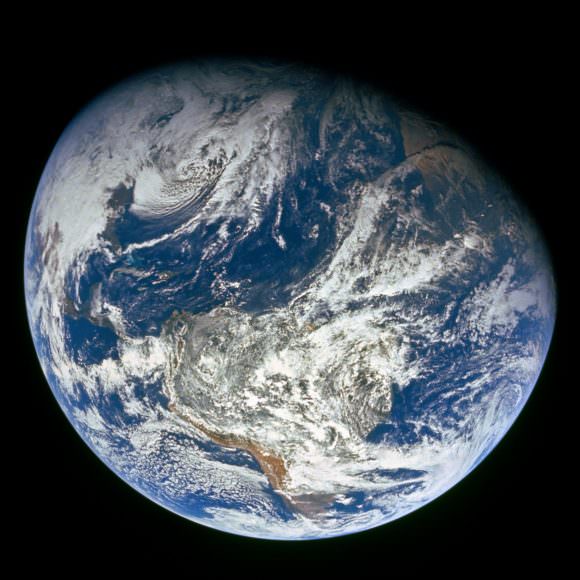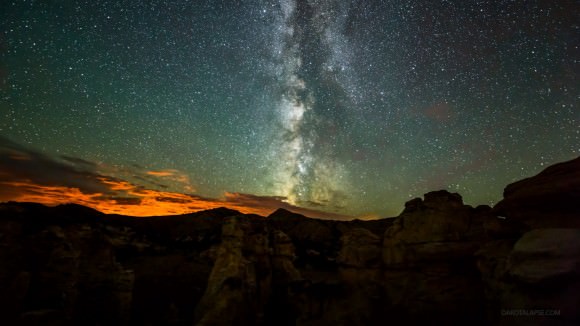Now, I’m no futurist, but I think I can predict one thing. Humans love to use energy, and in the future, we’re going to use even more of the stuff.
Let’s hope it’s clean energy, like that handy source of photons in the sky: the Sun. Not dirty forms of energy, like screams, unobtainium, liquid Shwartz, or using humans as batteries.

Once we really get our hands on a clean, unlimited source of energy, you can expect our usage to grow and grow until every human on Earth is using as much energy as a small country.
We will climb our way up through the Kardashev scale of energy usage, from Type 1, to Type II to Type III. Type III! Can you even imagine what would happen at that point?
Oh, you have no idea what I’m talking about? No problem.
The Kardashev Scale was originally developed by the Soviet astronomer Nikolai Kardashev in 1964. He looked at the advancement of humanity’s need for energy, and then just extrapolated when what our future energy demands would look like – and how they’d be supplied.
He broke them into three types. A Type I civilization would have complete and total mastery over all the energy of its planet. A Type II civilization would be masters of all the energy produced by their home star, and a Type III civilization would own all the energy in their home galaxy.
It was a pretty clever way to categorize the mighty capabilities of future civilizations, and it’s fueled the imagination of many sci-fi writers.
Where are we now along the Kardashev Scale? How long will it take for us to unlock each civilization level? Assuming we survive, of course.
Kardashev estimated that the total energy usage of a Type I civilization based on the amount of sunlight that falls on Earth. Our planet receives about 2 x 10^17 watts of power from the Sun.

Is that a lot? Is sure sounds like a lot. In 2013, the total human power consumption was 12.3 terawatts. So, doing a little math, we get about 1/14,000th the total potential power output that falls on the Earth.
It sounds like we’ve got a long way to making up that difference. But wait a second, we’re in the realm of exponential growth now, which has a surprising way of sneaking up on you.
Freeman Dyson, the famous physicist, estimated that it’ll only take about 200 years to fully utilize the energy falling on the Earth. That seems amazing, but when you consider that Germany was able to pump out 25 gigawatts of power in April, 2015, it doesn’t stretch your imagination too far.
Where do we go from there?
Kardashev estimated a compounding energy usage of 1% per year. And so, if you extrapolate forward from our current energy usage, he figured it would take about 3,200 more years to reach Type II status, where we’re extracting 100% of the energy pouring out of the Sun – all 4 x 10^26 watts.
Probably by using Dyson sphere, cloud or other Dyson-related polygon. We might have to dismantle all the planets to do it, but that’s just what we’ll do to keep up with our ravenous energy needs.

I know you look around your house, see your various appliances, and you’re unable to imagine how you could use that much power. But trust me, you will. You might have nanofactories, spinning out furniture made of pure diamond. Or a massive, planet-sized computer calculating the answer to life the universe and everything. Or a console that’ll let you play Witcher 3 without dropping frames. When energy is cheap and clean, all kinds of impossible ideas become reasonable.
Continuing this 1% compounding energy usage, Kardashev figured we’d be using up all the energy of our host galaxy within a few hundred thousand years – 10^37 watts -, but that’s mostly because of the time it takes to travel to from star to star. The Milky Way measures 120,000 light-years across, so even colonizing the entire galaxy couldn’t happen faster than that.
Imagine an entire galaxy, with every solar system completely dismantled and every star enclosed in a Dyson cloud of energy extracting solar cells. And yet, constant growth inevitably predicts it.

Is that it? Is that as much as a future civilization could colonize? Hardly, they would really just be getting started. A future civilization with that much energy at their disposal would be able to expand outward at just shy of the speed of light, eventually colonizing everything that the laws of physics would enable them to get to.
Eventually the expansion of the Universe, accelerated by dark energy would bring their colonization to a stop. Galaxies would drop over the cosmic horizon, forever out of reach. Vast cosmic power with no where else to go.
Thanks to Kardashev, we’ve got a great way of considering our place in the Universe. Assuming we don’t wipe ourselves out, we’ve got a bright future ahead.


We’re not even a Type I yet. Lets not put the Dyson’s Sphere before the horse, eh?
Hehe, THERE’s an image: a horse-drawn Dyson sphere. Suddenly all those old illustrations of Apollo make a bit more sense…. ~_^
Every source of energy produces waste heat into the atmosphere. When it’s the sun we call it a warm summer day – we’re used to the sun and, generally, its heat is balanced, the same amount in as out. Wind power is still net/net since it ultimately derives from solar. Coal and oil are solar heat stored long ago, released now and therefore not balanced. Nuclear heat, either from fission or fusion is new heat. However it is used, once it is used, it will enter our atmosphere. Transmitted energy from outer space, as is sometimes discussed, is new heat.
Add a billion people and we will need a billion people more energy, from somewhere. All that energy will heat the atmosphere after it does the work we created/obtained it for.
You know that an air conditioner pumps the heat out of the house? The house is cooler but the air in the environment is incrementally warmer. Where will we pump/cool all this hot air when the hot air is everywhere?
Trees do not grow to the sky.
Nikolai Kardashev, Freeman Dyson, and others have ignored the effect of advancing technology. This is one of the errors Karl Marx also made.
In Germany, total energy usage is not increasing because as technology advances, devices become more and more efficient, and thus use less and less energy.
This is not the case for India and other developing countries.
This is where the growth in energy usage is occurring.
To predict that they will not eventually reach the point that Germany is at now, is not a reasonable prediction.
I hate to break the bad news to you, but we will all be dead by 2030 due to catastrophic Methane releases from the Arctic Permafrost.
Now we are going to pay up for or stupidity and Hubris.
All this technology will NOT save us
from the Catastrophic Global Climate
Change that will cause the EXTINCTION
of humanity on Earth by 2030 GUARANTEED !
That is the primary threat facing us. Guns
and space ships wont help. We should have
listened to Jimmy Carter (who will be remembered
by History as the USA’s best President ever)
and prepared for the future when we had the
chance 30 years ago by reducing and then
eliminating our use of fossil fuels.
Now we are trapped. Irreversible Global
Climate Chaos is underway and we are all
going to starve to death in 16 years GUARANTEED
when not just my car, but even my fridge starts to be smart enough to hold a conversation with … Than it becomes time for the sequel to knightrider.
We’re at least at the point where cars drive themselfs (Tesla e.a.). ➡
(a definite Energy consumption increase for every person)
(although smartphones are a bit off the scale with their low energy consumption)
It seems like that “Mr. Fusion” device would be a better way to go rather than trying to capture every ray of sunshine. We have to leave some sunshine for the plants.
Not to be a party pooper, but I am not sure the we can extrapolate as easily as we think we can. 2 anecdotal examples: first, to quote “Welcome to Nightvale”, ‘past performance does not guarantee future results”. Next, an XKCD comic about marriage (forgot which one it was) that basically said, “If you get married tomorrow, at that rate, by next week you’ll have 100 spouses” (or some stuff). basically, what I’m getting at is that we don’t know if our energy demand will, in fact, be linear. We also have to take into account that we could actually DECREASE our need (as out efficiency increases exponentially). If we can (just as an example) capture the energy simply given off by our bodies, we could use it to power our electric cars and smartphones (super efficient, I know, but if you want to put a ball around a star, I’d still say mine’s more realistic). So the true Type II civilization may not be one that uses all the power in its star, but rather one that can excel simply on 1% of the power its star provides. And Type III? That may be one that is 100% independent of any energy. A sort of ‘perpetual motion’ civilization. Oh, and has anyone actually done the math about the practicality of a Dyson Sphere? I am not sure something like that would ever be possible or feasible. But that’s another discussion. Cheers!
Let’s look at the technology back in 1964.
Vacuum tubes were the way to go, People thought making a fast computer meant building the largest building possible and stuffing it with these wasteful tubes. Now some of the fastest computers sit right on your desktops. (No, I understand Supercomputers are going to places only dreamed of just a few years ago. But with the high-end PC’s taking off, just the sheer numbers puts them in the top percentage of fastest computers.)
Cars were getting bigger and faster. Fuel mileage was dropping fast. And with fuel being around 0.15 to 0.25 per gallon, who cared? Now you can’t even be considered environmentally conscious without owning a car that gets over 30 mpg average driving rating.
Even our lights are now using less energy.
So, maybe it’s time we rethink the stages of civilization? Big Business and Big Government are the only ones needing more energy. Small to Medium Private Companies are on the bleeding edge of conservation right now. Private homes are constantly being built to save energy. Maybe our next step in civilization is to use less energy very much more efficiently?
Agreed, I’ve always thought that the level of efficiency &/or the type of energy being utilized was a much better indication of the advancement of a civilization than simply the amount of power used.
When will we be a civilization?
The keyword in the Kardashev definitions that everyone misses is ‘control’. A Dyson civilisation is not in control of its matter and energy resources because Malthusian pressures have driven it to use all of those resources to which it has access. Control implies having the possibility of restraint, and it can be shown that to achieve true Kardashev II status a civilisation must already have adopted conservationist policies. When we look out into the Galaxy, we don’t see organisation on a larger scale than that, nor the wreckage of failures. Given the age of the Galaxy, this implies that either we are the first high-tech civilisation, or the conservationist ones have succeeded – so the proof that they’re out there is that we can’t see them.
This is a big Universe. Our Galaxy is huge too. How many years have we been here that we were even able to send signals into space? How many years will it be before we move up the chain of civilization? Our original radio signals have yet to even leave our seeable section of the Galaxy. Not even close to it. There could be an advanced civilization relatively close to us and we won’t be getting their first signals for hundreds of years. And if they find a way to move faster than light, they could conceivably get hear before their first ‘radio’ signal reaches us. And that is only in our little corner of the galaxy. If life is spread randomly throughout our galaxy, we could be in the center of a void of life and not even know it for thousands of years to come.